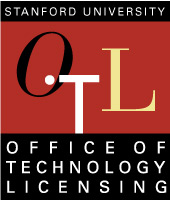Innovation and the translation of inventions into products that serve the public are deeply ingrained in Stanford’s culture and we have benefited greatly from it. Stanford is supportive of faculty and students becoming inventors and starting companies – whether or not these companies are based on Stanford technology. In addition, Stanford is committed to avoiding either perceived or actual conflict of interest issues with respect to start-ups. When licensing Stanford intellectual property to a start-up, both Stanford and its entrepreneurs have responsibilities to optimize technology transfer and mitigate conflict of interest (COI).
OTL makes licensing decisions based on its professional judgment about how to achieve the best possible benefit to the public, without inappropriate influence from internal or external parties.
To effectively transfer the technology in an unbiased way:
- OTL markets all Stanford technology to ensure fair and open access to potential licensees.
- Start-ups should not receive or be perceived as receiving preferential treatment.
- Student inventors (or faculty) involved in a start-up may not negotiate with the University on behalf of the company unless they are on leave from Stanford.
- If, after thorough marketing, OTL determines that an inventor-affiliated company is the appropriate licensee, OTL documents its marketing efforts and summarizes the rationale for its licensing decision.
- If the inventor is at Stanford, the inventor’s School Dean and the Dean of Research will review any actions that present a potential conflict of interest.
- The inventor must disclose any financial interest (consulting fees and/or stock options) in the start-up to the Deans.
- Student inventors must describe
- how they will separate and clearly distinguish their on-going activities as students (e.g., thesis research) from work being conducted at the company; and
- measures that will allow them to avoid all use of Stanford facilities and personnel for company purposes (e.g., availability of off-campus office or R&D space and support personnel). Ideally, the separation between Stanford and the company will occur contemporaneously to any formal option or license agreement. However, in some cases, a transition period of up to 1 year might be acceptable.
- The School Dean and Dean of Research must also review and approve any conflict of interest under policies that apply to faculty if Stanford faculty are involved with and have a financial interest in the start-up company.
- OTL may proceed with the licensing only if all conflicts are deemed manageable by the cognizant Dean and the Dean of Research. OTL options and licensing agreements may be exclusive or non-exclusive depending on what is most suitable for achieving technology transfer and the best possible benefit to the public.
An option agreement is often used to reserve rights in a technology so that the company can begin exploring funding opportunities in order to actually acquire the rights in question. A start-up company sometimes prefers to take an option to a license rather than an outright license itself. OTL may grant options for any time period up to one year in duration, most often in 6-month increments. Inventors are required to stop initiating new work on the technology at Stanford (that is, using University resources) when the technology is either licensed to a company or has been optioned to a company. Subject to conflict of interest review, the final separation between a company and Stanford may take up to 12 months, the period to be determined on a case-by-case basis. Since it may take several months to wind down ongoing research, it is important that inventors plan accordingly and begin the wind-down of the Stanford activities before either the licensing or optioning takes place.
It’s important for inventors to understand that this policy covering options and licenses is intended to enable inventors to succeed in translating their technologies into use without jeopardizing the mission or funding status of Stanford University. Stanford has a rich history of translating inventions, and these practices are designed to build on that strong base.
8/2/12
